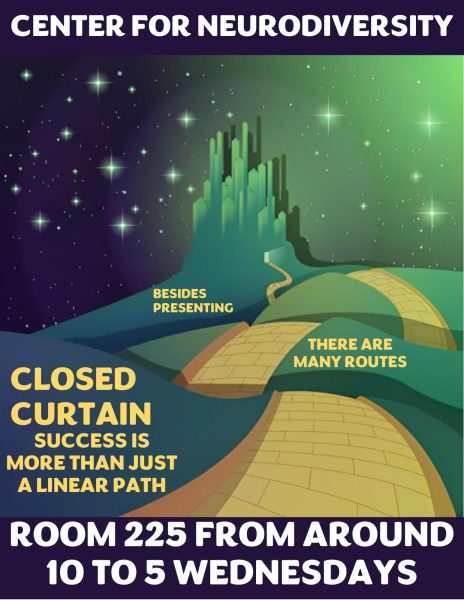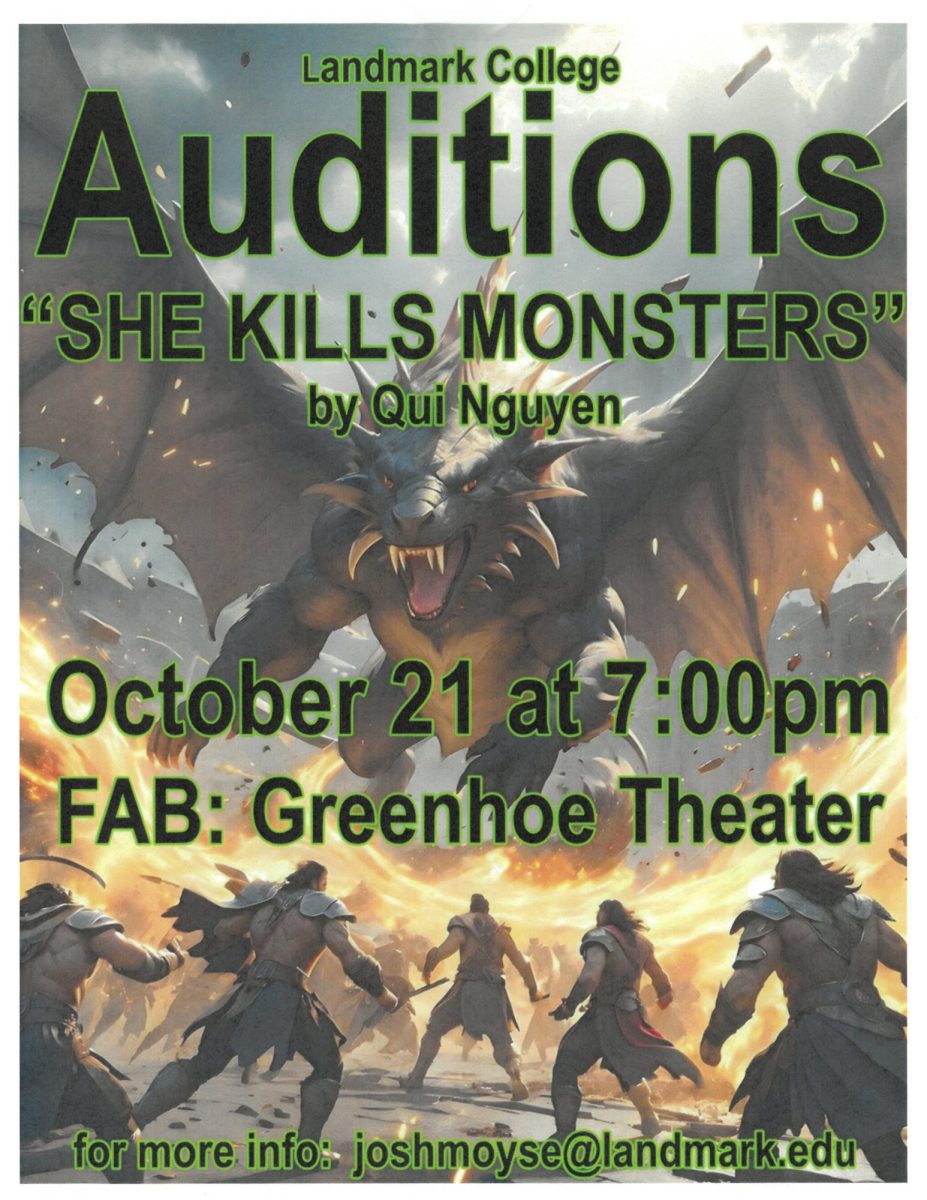Part I

The Closed Curtain Act, created by me, states that everyone should have a right to choose whether to present themselves in-person and/or in a public setting. Furthermore, no other person(s) should have the authority to be able to pressure and/or force someone into doing so. They may still hope for such things of people, but presenting oneself in front of an audience should remain completely optional with no expectations nor any consequences whatsoever should the decision not to be made.
The name Closed Curtain comes from how I see one representing how a show/performance is not happening and may never happen. This in turn connects to how a person can be in one way or another unwilling or unable to present themselves in front of an audience.
Several items inspired me to create the Closed Curtain Act. The first was my own personal experience, as I have dealt with stage fright and continue to do so. Other items also played a role which will be explained and/or mentioned further down the line.
Part II
Stage fright is a difference which creates a persistent sense of fear/anxiety of speaking in public and usually results in an inability to present oneself in front of an audience, sometimes in front of a camera as well. It is also known as Performance Anxiety, Camera Shyness, or Glossophobia. Those with this difference may fear that the intense pressure of public scrutiny will render them speechless and/or cause them to make offensive and/or embarrassing statements. Physical manifestations or symptoms of stage fright include but are not limited to dry mouth, stuttering, gastrointestinal discomfort, and even general/extreme avoidance. Those with stage fright can also commonly experience nightmares in which they realize, mid-speech, that they are incidentally exposed (i.e., naked). (Greenberg et al., The pop-up book of phobias 2005) What’s more, is that stage fright is one of if not the most common fear in America (Stossel, 2014; British Council, 2016). Among other places, stage fright can come from neurodiversity and all sorts of neurodivergent differences.
Anxiety, trauma, and/or fear can play a role in some neurodivergent differences leading to stage fright. Anxiety has been described as “an emotion characterized by feelings of tension, worried thoughts, and physical changes like increased blood pressure” and has been identified in various conditions from models like the DCM-5 & ICD-11 (Raskin, 2019). For example, there is social anxiety disorder which results in the previously mentioned feelings of embarrassing/humiliating oneself in social situations where they may be scrutinized.
Whereas fear is the response to something immediately apparent such as danger or some kind of perceived threat. Anxiety is the fearful response to something that is not immediately present but may become so in the future. This could be seen as the expectation of a threat, sometimes even one that is not fully clear what is. Anxiety can lead to anticipation and frustration, though that is not to say that anxiety is unnatural since it is virtually always experienced in everyday life and sometimes needed for adequate performance in certain scenarios. Even so, there are cases where anxiety can go beyond what is considered acceptable levels and subsequently leads to impairments when functioning in a society. Many different things can make a person anxious and public speaking is just one of them.
Phobias are an extreme fear response to certain stimuli, a given object and/or situation. With stage fright, this is known as Glossophobia. Phobias like this one lead to active avoidance and immediate anxiety, though when the stimulus is not present, the same can be said for the anxiety. Stage fright can also lead to panic attacks which are known as intense anxiety reactions that occur abruptly and can make one feel like they are dying. The term panic attack can be used in everyday life with minor instances but a true one is seen as far more severe, debilitating, and terrifying.
PTSD, otherwise known as post-traumatic stress disorder or the trauma perspective, is a neurodivergent difference that can lead to stage fright. This difference occurs when someone experiences or witnesses terrifying and/or highly emotionally negative event(s) some of which can be life changing. Furthermore, it is a difference that is acquired something one is born with, though certain biological factors can make someone more susceptible to it (gender, age, etc.), affecting varying levels of resilience in the face of trauma. PTSD itself has a wide array of effects that can last for years and even for the entirety of one’s life, including stage fright.
The root cause of these kinds of feelings appear to involve in some capacity the experience of trauma. Traumatic experiences can have a major impact on people, even when the experience itself is over because the person is question, and their body are still reacting to them. This is usually a violent experience or the threat of violence. These kinds of experiences can happen virtually anywhere at any time and have many different variations (cultural, social, economic, geographical, etc.) An inability to effectively process traumatic experiences such as seeing futures, positively learning from them, and/or to press through plays a role in this. A lack of connection to those who can help you, accepting them and/or seeing their point of view does as well. All this can have a massive effect on the structure of your mind, and this can result in differences like PTSD as well as stage fright.
Part III
Stage fright is a difference that can occur in all sorts of folk; famous and otherwise successful people such as performers, athletes, and it has even happened in historical figures as well. One good example of this could include President Abraham Lincoln. He suffered stage fright which prevented him from going up in front of an audience. Stage fright also made it difficult for Abraham Lincoln to speak “extemporaneously” … as in speaking without preparation and he also did not appear very fond of this tactic. (Lederle, C. 2018, May 17. What Did Lincoln Say about Extemporaneous Speaking?) He was able to pass these blocks, however, through hard work and practice which helped him with presenting overall.
Some more current examples of folk with stage fright could include Warren Buffet, an American business magnate, investor, and philanthropist (Baer, D. (n.d.), 2023). This man was well on his way to becoming a millionaire at an early age. However, his one problem was that he suffered crippling stage fright, so much so that he claimed to have sometimes thrown up. This was a real problem that he knew he had to overcome to become the success he is now. And so, one action Warren Buffet took was to sign up for a special course meant to assist him in this endeavor… twice. The first time, he backed out and the second, he stayed with it. As time went on, Warren’s fear eventually became less extreme, and he picked up some useful tricks to beat it.
Business magnates aside, another current example of someone with stage fright could be a singer, a popstar or even two; Lorde and David Byrne, musicians who “specialize in packing pop songs with quirks and curveballs”. (Rolling Stone, 2021) These two were introverted at an early age and suffered from stage fright as well. Both took their own steps to overcome it; Lorde would write notes to herself in the future when she would perform and noticed that the content of what she was doing could affect her level of anxiety. Meanwhile, David would find ways to distract himself like preparing a soothing drink before performing and taking it with him in a thermos too.
Adele, a very expressive and confident singer/songwriter who ironically suffers from stage fright, is another musical example (D’Souza, 2011). In the past, she has recorded albums which have sold millions of copies and according to her associates, she has one of the best voices they ever heard. “From the start it was clear she had this absolute God-given talent. It was the best voice I had heard in my life.” Furthermore, they had noticed her express obvious signs of stage fright like projectile vomiting and even she acknowledged this. “Yeah, I puke quite a lot before going on stage – though never actually on stage”. Despite all this, she claims that the worse the effect, the more she enjoys the experience, which makes her more unique given how she can overcome her fears.
Although figures from historical and modern times are good, those from motion pictures can count as well. A good example of this would be the son of King George V, otherwise known as Bertie, who is the main character in the historical drama The King’s Speech (Hooper et al., 2010). In this film, Bertie suffers from a severe stammer which makes it next to impossible for him to adequately speak in-public. He undergoes numerous treatments, but none are successful and only serve to increase his frustration with the whole ordeal. It does not help that Bertie’s position as royalty also means that he has many responsibilities that everyone expects him to fulfill, including public speaking. This grief stays the same until Bertie is introduced to Lionel Louge, a therapist who specializes in speech differences and possesses unorthodox methods toward dealing with them. Several years go by and though the two have their highs and lows with Bertie often expressing resistance and various turns of events which put him in an even more difficult position, he is gradually able to improve on his stammer before overcoming it all together, successfully delivering a speech to a massive crowd without choking up which is something he could never do at the start of the film.
Part IV
All that said, while such stage fright is a fear that can be overcome, it is still one that should always be understood and those who have it should be respected. Simply put, it should be our choice on whether we want to face our fears and not the decision of others. By all accounts, most of the figures I had mentioned before did so of my own accord and did not have to deal with other people attempting to exert their will/authority over them. Even then though, they technically only did it because they were left with no other choice thanks to still existing rigid and neurotypical social norms & expectations in their occupations and societies. The general expectation is that one must learn to present themselves in front of an audience if they wish to be a success in life and even after all that, it does not look like the fear ever goes away completely and/or permanently. It has a propensity to linger and there can be some days when it is worse than others despite the many methods to face it. Even more unfortunate is that not everyone is able to face this fear head on and beat it. Everyone is in one way or another different, and not all are like the examples listed above, not as capable/driven/successful.
The belief that some people hold, that they have the authority to make another go up in front of an audience against their will, I feel, is a very neurotypical and rigid way of thinking. Worse still, is that this belief includes the notion that they also have the authority to punish those who flat out refuse to present themselves. I know of no real valid and/or legitimate reasons that would justify doing this in any scenario and see it only as an abuse of power. Furthermore, this way of thinking exists everywhere, in schools, jobs, and society. Understandably though, is that so many people are under pressure to be present and not doing so can result in various ramifications. This can in fact include superiors who are trying to get their subordinates to present because if they cannot, then they themselves may have to deal with problems of their own. Regardless, this way of thinking is still toxic and can create substantial amounts of grief for all parties involved.
As mentioned before, stage fright can originate from all kinds of neurodivergent differences like post-traumatic stress disorder and creates feelings of fear and/or anxiety. Returning to the topic celebrities, the difference between the PTSD perspective and the perspectives they have is that many (if not all) of the latter are doing a lot of what they want to do, no one is really “holding a gun to their head”. With the former, on the other hand, they are being forced into something they do not want to do which retraumatizes them and worsens their fear and anxiety response. This can be said for all sorts of people who have stage fright and traumatic associations with it, which can actually include some celebrities as well.
This is no picnic for those on the authority side either. Should they try to force someone into this, they may have to deal with heavy and/or aggressive resistance. Moreover, they may not get whatever results they were hoping for and instead something less than decent. Stage fright coupled with pressure from others can affect/impair a person’s abilities and overall performance should they go up in front of an audience.
There is nothing wrong with attempting to help a person with these kinds of feelings, but there should be a limit and people should think about what does help, if what they are doing is even working.
Part V
Many people are simply indoctrinated to think in such ways. On an interesting note, this idea of mine is in a way like the movement which aimed to increase the amount of money in minimum wage jobs. (Cassidy, J. 2013) There was time, many years ago, when minimum wage gave decent pay until it went dramatically down. Ever since, there have been numerous debates over the consequences of this and whether a raise is necessary. Some have suggested that minimum wage affects the level of unemployment/poverty and that a raise could put many persons in desperate need above the poverty line, with several studies looking into this. Meanwhile, others have attempted to discredit and/or prevent all this for whatever reason(s) and with studies there as well to back them up.
The similarities with the two are that the problems tackled and worked to be changed with them have been around for an exceptionally long time and so, many people would find it difficult to visualize anything else that could potentially be better. All the while, some may even attempt to suppress the idea of change, regardless of whether it would be beneficial. This can be called conventional thinking and also the dominant paradigm which is the neurotypical way of thinking. In this sense, many people currently are treating stage fright as a problem, a defect that needs to be fixed when in actuality, this is not really the case, nor does it have to be.
Part VI
In the case of here at Landmark, few students ever really questioned the staff about why they must present or how it could be changed and those that did often got shot down. In actuality, this goes against what Landmark College stands for; to understand and respect student(s) differences to help them in their goals.
Several instructors in Landmark College have at certain times made presenting a graded/required aspect of assignments and the class overall. Some have even threatened to lower students’ grades or outright fail ones who do not present regardless of any other work they did before. This does not feel like a nice action to take, as it can put a lot of extra as well as unnecessary stress on students. If presentation must be a graded aspect of a course, it should at the very least be extra credit only.
Admittedly though, some instructors have given the students the opportunity to avoid presenting. For example, some have given the option of writing a paper instead of making a PowerPoint presentation, the former of which students do not need to present. Though they do this to some degree, they could still do it even more so. Some students may prefer the PowerPoint template and still not wish to present. In simple terms, just because you choose to make a PowerPoint, does not mean you have to present it in front of an audience.
There are of course classes on campus whose very nature revolves around public speaking. Theater courses would be a good example of this, as in classes that involve acting and/or some kind of performance. With this though, students would know what they are getting themselves into should they take any of those courses, based on the name and description provided during selection. Furthermore, students taking classes like the ones in theater would have an interest in performing/presenting and thus, public speaking. In other words, students would be doing this because they freely chose to, not because someone/society says they must. This further supports the notion of options which is what the Closed Curtain Act aims to advocate for.
Part VII
Further statement, the Closed Curtain Act can also be related in some capacity to the principles & guidelines of Universal Design for Learning or UDL which was something else that inspired me to create the Closed Curtain Act. Universal Design for Learning is a framework meant to create optimal learning environments on average for all sorts of people. Places like classrooms are often-times highly diverse and stuff like education should be designed to adapt to the many unique styles people learn and present their work. This would mean having good amounts of flexibility and accommodation. UDL was created for this exact purpose; to help people in education and this can work for those with stage fright as well. UDL comes from and is in a sense an extension of something known as Universal Design which is like UDL but has a much broader range rather than simply focusing on supporting learning. A good example of this could be a building that has stuff like ramps or elevators for traversal since not everyone would be capable of using the stairs. Another example could be closed captioning or subtitles which are words displayed on screen for the audio that is being played since there are some people who are not capable of hearing such things. In a way, stage fright is another example of something that someone is not capable of doing and so, accommodation via Universal Design and the related UDL would be useful there as well.
The Universal Design for Learning or UDL was created by a non-profit education research and development organization known as CAST, formerly known as the Center for Applied Special Technology. CAST is comprised of over fifty employees of various backgrounds. The organization started in 1984 after five people met in a pizza parlor and were somehow able to get their hands on $15,000. They expanded their organization over the years, acquired even more money, worked with lots of people, won all sorts of awards, and continue to help people to this very day. “CAST’s mission is to transform education design and practice until learning has no limits.” This is what was said on their official website and CAST appears to be doing an excellent job at that. Even the website itself has been designed to accommodate the needs of different people. (Center for Applied Technology, CAST, 1984, https://www.cast.org)
The guidelines in principles for Universal Design for Learning are divided into three different sections: Engagement, Representation, and Action & Expression.

The first section is Engagement which involves giving students things that stimulate their interests and lead to greater engagement. This also means doing stuff that will fuel students’ interest in learning and encouraging them to make/learn from mistakes. Some things work better for some students than others. Removing distractions is also related to Engagement. The second section is Representation and involves providing information in many ways. This can make information easier to understand and provide alternatives for methods that would not be as effective for some students as others. The third and last section is Action & Expression which involves managing and providing students with access to all kinds of materials for them to learn and freely express their work.
Some of the guidelines in Universal Design for Learning could potentially be applied to stage fright. One of them is in the Engagement section and involves “[Creating] an accepting and supportive classroom climate” by removing perceived threats and distractions including subtle ones. The former of those could very well include the stress and/or anxiety created by stage fright and the unreasonable pressure from others/society to present.
In the Action & Expression section, there is a guideline that appears to state how the many people differ widely in navigating through their physical environments along with information and activities. It goes on to mention how various alternatives should be provided for response, selection, and composition. This is to make this navigation through these environmental barriers easier for them. Presenting oneself in front of an audience could maybe count as one of these kinds of barriers, so alternatives to it would definitely be useful.
Conclusion
Overall, through this movement, my Closed Curtain Act, I hope to make a change which I genuinely feel will better all. I also see idea of mine as having the potential to become something big and important if enough energy is put into it. Various other movements had started small and had aspirations to make stuff fairer for certain groups of people. This movement of mine could become a global one.
References:
- Greenberg, G., Rubess, B., & Reinhart, M. (2005). The Pop-up Book of Phobias. Harper Entertainment.
- Raskin, J. D. (2019). Abnormal psychology: Contrasting perspectives. Red Globe Press.
- Until learning has no limits®. CAST. (2023, June 6). https://www.cast.org/
- Lederle, C. (2018, May 17). What Did Lincoln Say about Extemporaneous Speaking? | Teaching with the Library [Webpage]. The Library of Congress. blogs.loc.gov/teachers/2018/05/what-did-lincoln-say-about-extemoraneous-speaking
- Stone, R. (2021, November 4). Lorde & David Byrne Talk Stage Fright, Social Media, and Grapefruit in Our Musicians on Musicians Podcast. Rolling Stone. https://www.rollingstone.com/music/music-features/lorde-david-byrne-talk-stage-fright-social-media-and-grapefruit-in-our-musicians-on-musicians-podcast-1252586/
- D’Souza, C. (2011, October 3). October 2011 vogue: Adele cover interview. British Vogue. https://www.vogue.co.uk/article/adele-vogue-cover-interview
- Stossel, S. (2014, February 19). Performance anxiety in great performers. The Atlantic. https://www.theatlantic.com/magazine/archive/2014/01/what-hugh-grant-gandhi-and-thomas-jefferson-have-common/355853/
- How to overcome your fear of public speaking | British Council. (n.d.). Retrieved August 7, 2023, from https://www.britishcouncil.org/voices-magazine/how-overcome-fear-public-speaking
- Cassidy, J. (2013, February 14). The Case for a Higher Minimum Wage. The New Yorker. https://www.newyorker.com/news/daily-comment/the-case-for-a-higher-minimum-wage
- Baer, D. (n.d.). Warren Buffett Used To Throw Up Before Public Speaking—Here’s How He Mastered It. Business Insider. Retrieved August 23, 2023, from https://www.businessinsider.com/how-warren-buffett-learned-public-speaking-2014-12
- Canning, I., Sherman, E., Unwin, G., & Seidler, D. (2010). The King’s Speech. United States; The Weinstein Company.
- Special Thanks to Clark Johnson, Jamie Harvey, Adam Lalor, Katie Zvereva, Elia Sinaiko, Timothy Beck… *sigh* & Chaia Flegenheimer

















Margie Salvante • Dec 10, 2023 at 3:57 pm
Ok. This is just brilliant. What else can I say? I wonder what would happen if you sent it to the folks at CAST to get their take on it. I wonder what the steps would be here at Landmark to get the Closed Curtain Act adopded as a guiding principal for faculty. Bravo Nick!